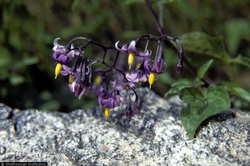The small
portion of Nature Guide to the Northern
Forest that we read this week was quite interesting to me, largely because
of Peter Marchand’s introduction. In the introduction, Marchand’s immense love
and respect for nature is clearly shown. What interests me about Marchand’s
description of himself as a young child is how different his actions and
passions were from my own when I was a child. As a disclaimer, when I compare
Marchand and myself throughout the rest of this post, I am merely comparing us
for the sake of example, and not because I feel that I am nearly as skilled or
accomplished as he is. Regardless, I now feel similarly to Marchand in the
sense that I am attached to nature, though it is evident that this passion was
not derived directly from my childhood experiences. As a child, on the
occasions I would hike with my family, I would constantly complain that we were
simply walking for walking’s sake, and that we had no end goal in mind. I
believe that a significant part of the reason for my discontent in these
situations was because I was raised in New York City. This is where my
experience differs sharply from Marchand’s, and it is what interested me most
when reading about his childhood. As a result of growing up in New York City, I
felt disconnected from nature for most of my childhood. This apparent
disconnection did not bother me however, nor did I even notice it for that
matter, or I likely would have done something to remedy it. Instead, I was
content to live an urban lifestyle without much focus on nature. Near the end
of high school, I recognized that my lifestyle was relatively detached from the
natural world, though I obviously was no different from anyone else in the way
that I depended on its resources. Due to this realization, I decided to get involved
in outdoor activities in college.
In my time at Hamilton, I have
learned so much about the natural world and had great experiences in the
outdoors. I now see myself as quite similar to Marchand in the sense that I derive
inspiration from and deeply appreciate nature. The vastly different paths
Marchand and I took that resulted in us both respecting the natural world
fascinate me, as I think it is a great example of the way in which people can
converge at common goals despite having completely different experiences and
backgrounds. More important however, is how this phenomenon can help shape our
future. In relation to the conclusion of my first post, I sincerely hope that
humans will find a way to protect our planet for future generations and for
other species that reside here as well. I feel that attacking the issue of
environmental degradation from many different angles will be essential in
allowing us to alter our lifestyles to become more sustainable. Because of the
need for many different perspectives, I believe environmentalists must come
from all different backgrounds and have varying supplementary passions. This is
the main reason I find the difference between Marchand’s and my life to be
important. It shows that people with different experiences, and therefore
different skills, can come together and fight for the same cause.
Citations:
Marchand, Peter J. Nature Guide to the Northern Forest: Exploring the Ecology of the Forests of New York, New Hampshire, Vermont, and Maine. Boston, MA: Appalachian Mountain Club, 2010. Print.
Citations:
Marchand, Peter J. Nature Guide to the Northern Forest: Exploring the Ecology of the Forests of New York, New Hampshire, Vermont, and Maine. Boston, MA: Appalachian Mountain Club, 2010. Print.













